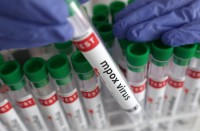
Photo courtesy of prweb
LONDON, Sept. 8 (PNA/Xinhua) — A team of researchers have developed a new molecular test that indicates how well a person is aging, opening a new door to the treatment of age-related disease, according to a study published Monday by King’s College London.
The test can help manage age-related disease by identifying people most at risk of diseases affected by age, as well as improve the way anti-aging treatments are evaluated, the researchers say.
The study was conducted by researchers from King’s College London, Karolinska Institute in Sweden and Duke University in the United States.
They used a process called RNA-profiling to measure and compare gene expression in thousands of human tissue samples. The findings showed that the activation of 150 genes in the blood, brain and muscle tissue were a hallmark of good health at age 65.
The researchers then created a formula for “healthy ageing”, and used this to measure how well a person was aging when compared to others born the same year.
They found an extensive range in biological age scores of people born at the same time, indicating that a person’s biological age is not related to his or her chronological age.
A low score in biological age correlates with cognitive decline, implying that the molecular test could be used in blood tests to predict those most at risk of Alzheimer’s disease or other dementia and suitable for taking part in prevention trials.
The researchers say their findings provide the first practical and accurate test for the rate at which individual bodies are aging.
If this is the case, it could lead to numerous insights in research because age is a critical factor in almost every area of medicine.
“We now need to find out more about why these vast differences in aging occur, with the hope that the test could be used to reduce the risk of developing diseases associated with age,” said Prof James Timmons, lead author of the study.
The study has been published in the journal Genome Biology. (PNA/Xinhua) JBP/EBP







